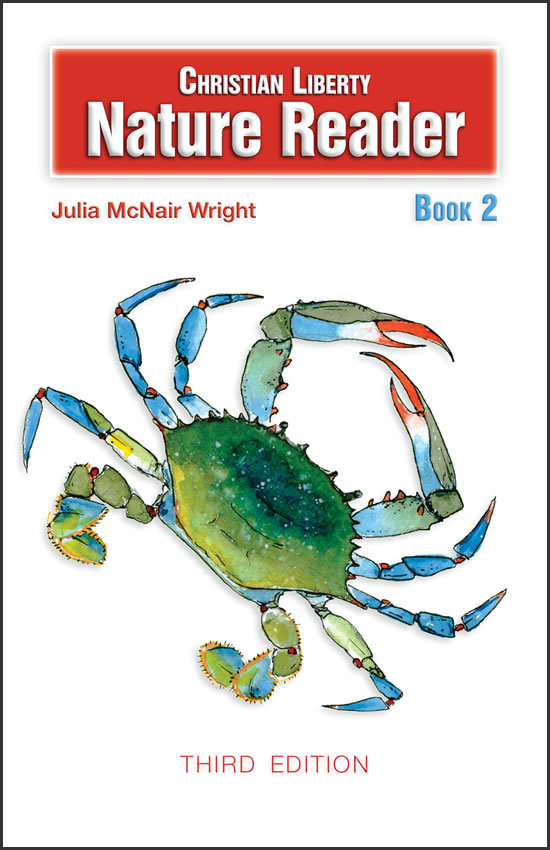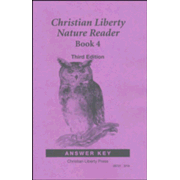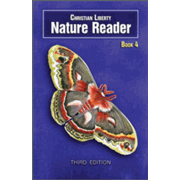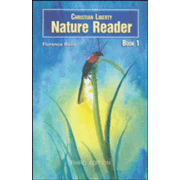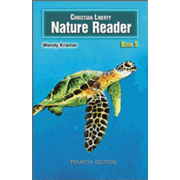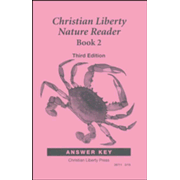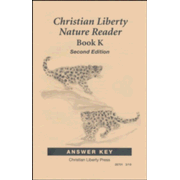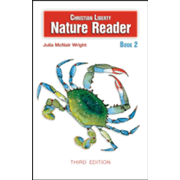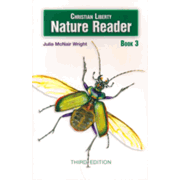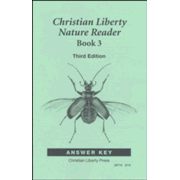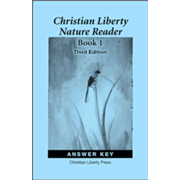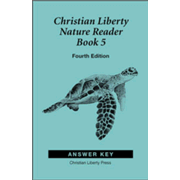The Christian Liberty Nature Readers offer an appealing combination of reading and science, an excellent example of the type of real books Charlotte Mason would recommend. These readers are informative, intriguing, and well written rather than textbookish. The second edition of Book K and the third editions of Book 1 through Book 5 all feature lovely, lifelike watercolor images. Christian content is very evident in all except Book 4. All of the readers have review questions at the end of each reading, a glossary at the back of the book, and a separate answer key.
These books will serve well as readers when children are past the beginning stages and have become fairly fluent. The kindergarten book begins at a level of difficulty beyond beginning readers since it uses complex sentences and vocabulary words such as giraffe, camouflage, and wrinkled. Since Book K raises the bar so high, vocabulary becomes only slightly more challenging in each book thereafter. You might use these books as read-alouds for the lower grade levels if the reading level is too high—think of the books as science books rather than readers in this case.
The books need not be used at particular grade levels other than Book K. Book K seems especially suited for kindergarteners since it introduces an animal for each letter of the alphabet. The other books gradually reduce the size of the fonts and increase the amount of information.
This series' orientation toward nature study rather than a broad range of science topics fits perfectly with Charlotte Mason's approach to science. Book 1 features stories about spiders, insects, birds, and animals. Crabs and other marine life, bees, wasps, worms, and spiders are the themes of the reading selections in Book 2. In Book 3, children learn about ants, flies, beetles, barnacles, jellyfish, sea stars, and dragonflies. Book 4 topics include poison ivy, various birds and insects, toads, bats, beavers, turtles, snakes, and the stars. Marine biology and oceanography are the main topics in Book 5 as it explores the ocean, currents, and tides plus many different types of creatures that are found in the ocean and near the shore.
Science information within the readings is reinforced by the review questions. The science covered in these books should be sufficient for students in kindergarten through third grade, although you might want to introduce science topics beyond nature study.
Rather than being dry, the science in these readers is entertaining, interesting, and likely to encourage children to be more observant of nature.




